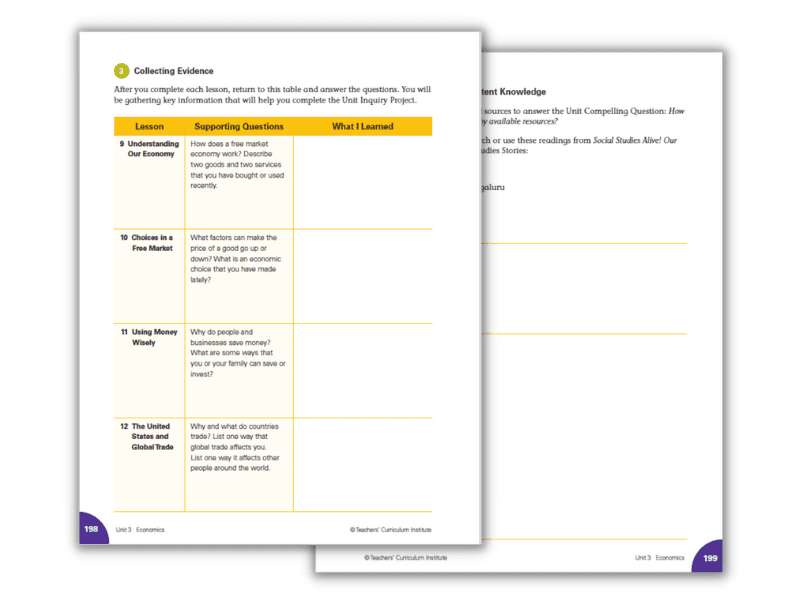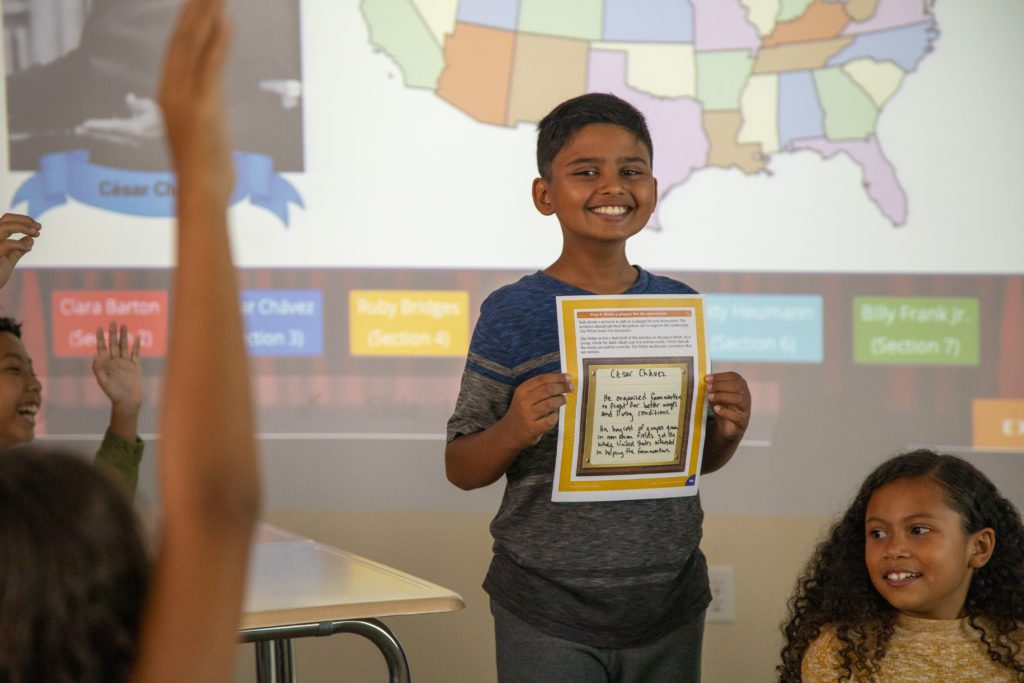
TCI’s Social Studies Alive! program for elementary classrooms fosters curiosity with student-driven Inquiry Projects. Each unit in the program features a grade-appropriate Inquiry Project, where students explore a compelling question about social studies, conduct research, and write an evidence-based argument.
Let’s walk through the steps of a TCI Inquiry Project.
1. Gathering Visual Evidence
The Inquiry Project captures students’ attention with an engaging video that asks students to analyze rich images. Students may examine a modern-day photograph of a St. Patrick’s Day celebration and make connections to how Irish immigrants settled in the United States in the 1800s. They may watch a video of a port-side city and observe how geography affects the community.
As students analyze the images, they answer questions that help them make connections to broader concepts in the unit. Watch this sample video from Social Studies Alive! Our Community and Beyond.
2. Developing Compelling Questions
After gathering visual evidence, students are introduced to the unit’s storyline. Each unit has a different storyline—from creating a budget to solving a problem in the community. Students will take on the roles of historians, geographers, economists, and citizens.
Students are also introduced to the compelling question. Some examples include:
- Why should you do the right thing even when no one is watching?
- How did technology transform the United States?
- How do history and culture shape your community?
They then ask their own questions about the unit’s storyline and compelling question.
3. Collecting Evidence
Throughout the unit, students collect evidence that helps them answer the compelling question. Students fill out a chart after each lesson to record what they learned. They come back to this chart throughout the unit.
4. Building Additional Content Knowledge
In this step, students practice gathering evidence and evaluating sources. Students conduct outside research about the unit’s compelling question. They may use readings from TCI’s Social Studies Stories collection to help them build additional content knowledge.
5. Constructing an Argument
Students take everything they have learned so far to develop an evidence-based argument. They first write a claim that answers the unit’s compelling question. Then, they identify evidence from their research that supports their claim.
6. Taking Informed Action
Finally, students have the opportunity to share what they learned with their classmates or adults in the community. They may create a poster, digital presentation, or video.
In addition to the Inquiry Projects, there are many opportunities to nurture student curiosity in TCI’s elementary school social studies program. From investigating primary sources to exploring multiple perspectives, the program’s rich resources will keep students asking questions and looking for answers.
Want to get the latest on new features and program updates? Sign up for TCI’s newsletter to stay in the know.




